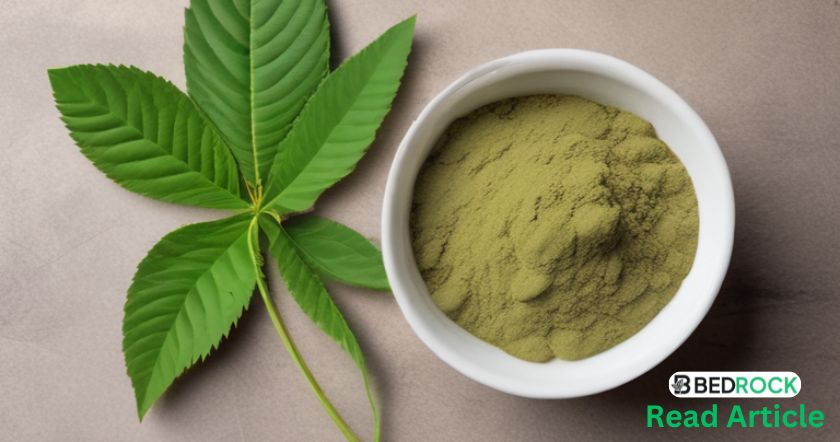Blog
From Plant To Powder: How kratom Is Produced

The Kratom tree is also commonly known as”Thom” and “Ketum”.The name “Kratom” comes from a Thai word for the Mitragyna speciosa tree species. It is a large tree belonging to the family Rubiaceae. Native to Southeast Asia, the tropical evergreen tree is a member of the coffee family.
Kratom trees have a maximum height of 18 meters and a maximum width of 4.5 meters. It has oval leaves that range in color from light to dark green, and it has spherical yellow blooms with around 50 seeds within. These trees require unique and specific growing conditions, including tropical climate, fertile soil, and heavy rainfall. Due to this, the countries where Kratom is cultivated most frequently include Thailand, Malaysia, Indonesia, and Papua New Guinea.
We will explore the amazing journey that takes Kratom from the lush, tropical forest of Southeast Asia to your doorstep in the form of Kratom capsules, extracts, finely ground powder, and more. This method is based on science, custom, and a great regard for the natural world.
Click to Start Your Wholesale Journey!
Step One: Growing The Trees
Kratom is derived from the Mitragyna speciosa tree, not from a laboratory or pharmaceutical firm. Southeast Asian harvesters and farmers have been raising Kratom trees for many centuries. These experienced cultivators have a thorough understanding of the tree, particularly its perfect growth environment.
Kratom has long been a part of daily life in the Southeast Asian nations where this tropical evergreen tree is found, such as Borneo, Malaysia, and Indonesia. There are a lot of alkaloids in this amazing plant, namely mitragynine, and 7-hydroxymitragynine.
Step Two: Harvesting The Leaves
Harvesting is a sensitive procedure that greatly influences the qualities of the finished product. The veins that run through Kratom leaves are where the plant’s power is found.
The color of the veins will change depending on when these leaves are plucked and how mature they are.
White vein Kratom is harvested too early, followed by the green vein, and then the red vein, which is let to mature fully. The vein color gives the distinctive alkaloid profile present in the leaves, resulting in various interactions between the body and each strain.
Step Three: Desiccation And Curing
After the compilation of harvesting, the leaves go through a rigorous drying process. The techniques and duration of this drying process have an additional impact on the Kratom’s alkaloid profile and final color. Typically, this procedure calls for both inside and outdoor drying.
For example, red vein Kratom leaves can be dried outside in the sun or under the influence of UV lamps, whereas green vein leaves can be dried indoors in a cool, air-conditioned space with little light. During this phase, the leaves may also ferment, producing Kratom with gold or yellow veins.
Step Four: Grinding To A Powder
The Kratom leaves are processed into a fine powder following the drying process. Usually, industrial grinding machines are used for this, which are capable of pulverizing the leaves to a consistency similar to flour. Making it ideal as a foundation for our Kratom products, this fine Kratom powder makes it simple to consume and absorb.
Step Five: Formation Of Product
After getting the product in powder form that has been finely ground, the formation of different kratom products could be started. Every product offers a different manner to consume Kratom, whether it’s made into easy-to-take capsules, powerful extracts, or convenient gummies and shots. As it has been enjoyed for generations in its native nation, the powder may be brewed into a distinctively flavored tea for people who appreciate tradition.
All things considered, the process of producing Kratom is intricate and closely linked to both the natural life cycle of the Kratom tree and conventional farming methods. Knowing this procedure allows us to appreciate Kratom not just as a product but also as a natural gift, an example of human creativity, and a representation of cultural customs. Take caution when using it, and keep in mind that, like the tree it originates from, your experience with kratom is continually changing.
The Major Exporters Of Kratom In The World
While it is possible to cultivate kratom outside of its native Southeast Asian countries, much of the supply that is available in the US and other countries is imported from these regions.
Indonesia may produce and export the most mitragyna speciosa powder. In contrast to other countries in Southeast Asia, Indonesia has not classified kratom as a prohibited drug, leading to increased interest in kratom cultivation. On the island of Borneo, areas in Indonesia like West Kalimantan have a large supply of kratom.
Conclusion
It takes a while to get a Kratom leaf from a plant growing in Southeast Asia to Kratom enthusiasts in the United States—from seed to harvest, drying, and packaging.
At Bedrock Botanicals, we assist in a powerful professional relationship with skilled growers in Southeast Asia. Additionally, we also test our kratom products at an outside laboratory for analysis and we provide complete lab reports to all customers. We seal all of our products tightly to retain freshness and maximize customer satisfaction. Bedrock Botanicals offers Kratom Extracts, Capsules, powders, and gummies at affordable prices which you can buy online.
Your happiness with our Kratom products is our first concern at Bedrock Botanicals.